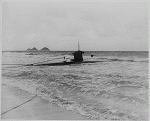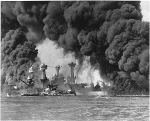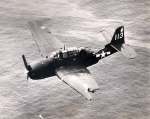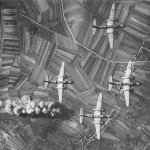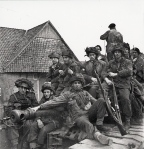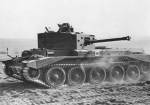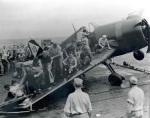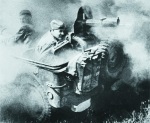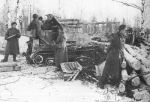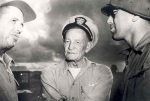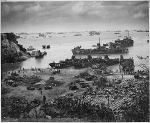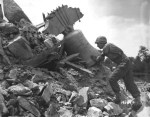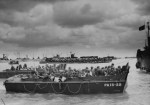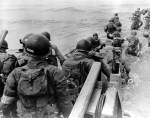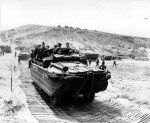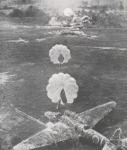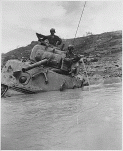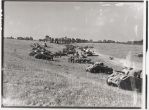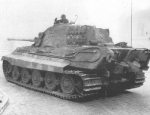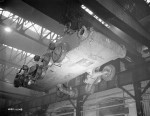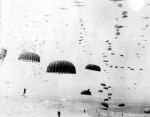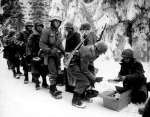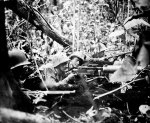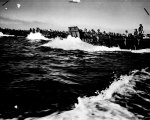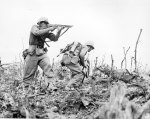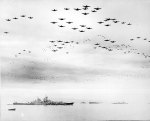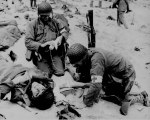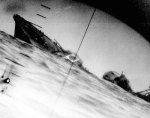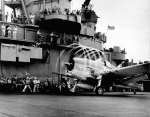Archive for June, 2010
U.S. Jamestown Foundation, “China Briefing,” recently published an article signed by Richard. Bi Sheng Ge article, the article said, after the United States, Russia, France, Britain and other established major arms-exporting countries, China is now the world’s fifth largest arms exporting countries. In 2007, it signed an agreement on arms exports overseas, China came in fourth place, located in France, Germany and Spain before. Article summarized as follows:
All indications are that China as a major player in the international arms market are returning to the global stage. 80 years since the 20th century, China’s arms sales to Iran and Iraq, the Chinese foreign arms sales performance has been poor. In 2007, China signed an agreement on arms exports worth 38 billion U.S. dollars, a record 10 years of the highest sales of foreign arms sales. In recent years, the average amount of foreign arms sales to more than 2 billion U.S. dollars per year, far higher than the average of the last century, 90 years the amount of one billion U.S. dollars. Despite the growing amount of China’s foreign arms sales, but China should be a high degree of cruelty in this industry to keep their competitive edge, China will face a persistent challenge.
China’s main exports of weapons, including:
K-8 trainer aircraft: Stockholm International Peace Research Institute’s database on foreign arms sales to show that China has been exported since 2000, nearly 250 K-8 light trainer / attack aircraft. Among them, the aircraft’s largest customer in Egypt, procured a total of 120, most of which in 2001-2008 years, its assembled in Egypt. Venezuela is negotiating with China sourcing 24 K-8.
J-7MG fighter: kind, the Chinese Air Force J-7E of the export-oriented. J-7E in itself to upgrade from a MiG fighter jets from -21. J-7MG a larger wing, the installation of British radar. Stockholm International Peace Research Institute’s database on foreign arms sales to show that since the 20th century, since mid 90′s, China to Bangladesh, Namibia, Nigeria, Pakistan and Sri Lanka has sold more than 100 aircraft F-7MG-type machine.
JF-17 Thunder fighter: JF-17 also known as FC-1 fighter, is a lightweight multi-purpose combat aircraft, and the United States F-20 “Tiger Shark” fighters like. JF-17 is a joint development between China and Pakistan formed. China is also producing a number of fighters to equip its air force. It is estimated that Pakistan may buy up to 250 aircraft. JF-17 fighter jets sold to developing countries, primarily because these countries need to replace old MiG -21, -7 F, or F-5 fighter jets.
C-801/C-802 anti-ship cruise missiles: These missiles, also known as the Eagles -8 and the Eagles hit a missile hit -82, its combat power is equivalent to the French Exocet missiles. C-802 missiles are equipped with solid rocket boosters to increase the range. Ships, ground vehicles and aircraft can launch the anti-ship cruise missiles.
WZ-551 armored personnel carriers: While the Model is not a particularly high-tech weapons systems, but the Model is being sold all over the world, including Argentina, Kuwait, Nepal, Oman, Sri Lanka and other countries.
Unsound arms export ranking
At present, China in the global arms market is not ranking high on the solid, most of the weapons are exported to a small number of customers, particularly Pakistan. The amount of foreign arms sales to China in 2007 is very high mainly because China and Pakistan reached an agreement to sell a number of major equipment, such as the JF-17 fighter planes and Jiang Wei frigates. Thus, in the next few years, China’s ability to continue to maintain such a high arms exports are still not sure.
The supply of weapons systems in China, only a part of the advanced weapons (such as trainer, and anti-ship cruise missiles) in the global market are competitive, their customers are basically poor. In addition, China’s arms exports contain a considerable part of the light weapons and ancillary equipment such as trucks, uniforms and field equipment. Finally, many of China’s arms exports are still based on the watered-down “friendly price.”
Keep in mind, China’s arms exports as the world’s fifth, fourth, or third countries, the fact should not be exaggerated. In 2007, China delivered to developing countries, 1.2 billion U.S. dollars worth of weapons to the third highest in the world of arms-exporting countries, but is the first of the U.S. foreign military sales amounted to 7.6 billion in the second place of the Russian Army sales amounted to 4.6 billion, respectively, of China and nearly six times more than 4 times.
In addition, between 2000 and 2007, China’s foreign military sales in the global amount of 7.8 billion U.S. dollars, 92 billion U.S. dollars while the United States, Russia, 36.2 billion U.S. dollars, 34 billion in Britain, and even the amount of Germany’s foreign sales also exceeded the Chinese nearly 60%. Foreign military sales for a particular year does not guarantee a good position on arms exports to China have a bright future.
Analysis of large sales prospects
In order to maintain a leading position of arms export market, China needs to introduce more competitive weapons. JF-17 is likely to sell a large amount to some need to be at a lower cost to replace the MiG -21, or F-5 fighter country. According to reports, JF-17 is priced at between 1500-20000000 U.S. dollars, far more American-made F-16 fighter planes cheap.
China’s export prospects of a better category of weapons is a new F -10 fighter. Kind, and Israel’s “lion” type fighter similar to its combat force is equivalent to the U.S. F-16C model aircraft. F -10 to 80 development work began in the 20th century, the age at 3 to 4 years before mass production, and equip the Chinese Air Force. -10 Relative Chinese Air Force F-60′s and 70′s equipment, aircraft, its operational power has greatly improved, but there may not be as purchases from Russia Su-Su -27 or -30 fighter.
The outside world speculated that China may in the global arms market to sell J-10 fighter, kind, the price will be lower than the U.S. F-16 fighter jets, the Swedish “Gripen”, and other small aircraft. Pakistan and Iran will be the future of J-10 fighter jets customers. Other potential marketability equipment, including C-701 short-range anti-ship cruise missiles, FN-6 man-portable surface to air missile, KS-1A SAM.
Still, most Chinese weapons system’s combat force remain unclear. For example, J-10 fighter jets may be a good performance of the aircraft, but its performance and reliability can not be independently confirmed, many countries may not want to take such a risk. The JF-17 on its own is a fairly insignificant in terms of aircraft. Purchasing second-hand F-16 fighter aircraft may be a lower cost alternative to more fighting forces.
But do not forget that many countries will not necessarily buy the most expensive weapons systems. In selected cases, they are still willing to pay high prices to buy high-quality products. For example, when Pakistan’s decision to purchase new submarines, it choose the procurement Franco-German state, rather than China. Pakistan in the procurement of a Chinese warplane also procured from the U.S. F-16 fighter jets.
In the current conditions of global economic crisis, many potential buyers to be more serious than usual, consider China’s weapons, because they are in the next 20 to 30 years time, must be equipped with and use these weapons systems. To this end, these countries may be delayed until after the economic recovery of a substantial acquisition of weapons.
China has a large technological advantage, a weapon is a ballistic missile systems, such as Dongfeng -11 and B-611 short-range ballistic missiles. China has Dongfeng -11 (M-11) sold to Pakistan, Turkey also received B-611 missiles. As for the sales of a range of longer-range missile system, subject to restrictions on missile technology control group, while China is a member of the group.
Uncertain future
On potential customers, customer needs, and China can provide weapons, China’s strength is still quite limited. However, China will be increasingly in the global market launch of its weapons, in the process, it will be gains in overseas markets.
To be sure, the expansion of China’s arms exports will continue to be military-industrial complex is an important business strategy, but almost all the arms manufacturers in the world is also true. Taking into account the weapons production capability and economic pressure to keep the plant open and keep factory jobs, so that the country will actively carry out arms export business, therefore, China is unlikely to crowd out 1:00 into the United States and Europe’s largest suppliers of advanced weapons.
Russia will be responsible for the consequences caused by its failure to deliver S-300 surface-to-air missile systems to Iran, the Islamic Republic’s Defense Minister Ahmad Vahidi said on Tuesday.
In an interview with Fars News Agency he said the delivery of the air-defense systems would not violate Russian or international laws.
Moscow said last week it would freeze the delivery of S-300 systems following a new round of UN sanctions imposed on Tehran June 9.
“Russia has a duty to fulfill its obligations… Implementing the S-300 deal is not against Russian laws or international regulations,” Vahidi said. “It is obvious that [Russia] is responsible for the damages caused by its failure to implement the deal.”
Vahidi also said that Russia would soon announce its official stance on the issue and that Iran would make no further comments until then.
Vahidi said in late April Iran would produce its own missile defense systems similar to Russia’s S-300 system.
A Kremlin source said on June 11 the sale of S-300 air defense systems fall under the new UN Security Council’s sanctions against Tehran, but the Russian foreign minister said it was up to the president to make the final decision.
UN Security Council Resolution 1929 imposes a fourth round of sanctions on Iran over its nuclear program, and includes tougher financial controls and an expanded arms embargo.
Russia initially said the delivery of S-300 systems to Iran would not be affected by the new UN sanctions since they are not included in the UN Register of Conventional Arms.
However, experts from the Federal Service for Military and Technical Cooperation suggested that the S-300 system did come under the new set of sanctions.
Moscow signed a contract on supplying Iran with at least five S-300 systems in December 2005, but delivery has so far been delayed.
The United States and Israel have urged Russia not to deliver the missiles to Tehran.
The S-300 contract is worth some $800 million, while Russian experts estimate the penalty for breach of contract at $400 million.
The advanced version of the S-300 missile system, called S-300PMU1, has a range of over 150 kilometers (over 100 miles) and can intercept ballistic missiles and aircraft at low and high altitudes, making it effective in warding off air strikes.
Iran accused the United States of “deception” on Saturday and insisted its missiles are for self-defence only after a top US official charged that the Islamic republic could rain missiles down on Europe.
“The Islamic Republic’s missile capability has been designed and implemented to defend against any military aggression and it does not threaten any nation,” Defence Minister Ahmad Vahidi said in a statement carried by state media.
He was reacting to remarks by US Defence Secretary Robert Gates on Thursday that US intelligence has shown that Iran could attack Europe with “scores or hundreds” of missiles, prompting major changes to US missile defences.
Washington seeks to “expand its domination over Europe, and to find an excuse not to dismantle its nuclear weapons stationed in the region, while putting the pressure on Russia and surrounding it,” Vahidi said.
“The US seeks to create regional discord and impair (Moscow’s) regional ties to humiliate Russia and weaken its relations with neighbouring countries,” he added, urging Russia not to fall for “US deception and psychological war.”
US President Barack Obama in September cited a mounting danger from Iran’s arsenal of short- and medium-range missiles when he announced an overhaul of American missile defence plans.
The new programme uses sea- and land-based interceptors to protect NATO allies in the region, instead of mainly larger weapons designed to counter long-range missiles.
Gates said the United States believed “that if Iran were actually to launch a missile attack on Europe… it would more likely be a salvo kind of attack, where you would be dealing potentially with scores or even hundreds of missiles.”
Iran is under mounting international pressure over its controversial nuclear programme of uranium enrichment which the West fears masks a covert weapons drive.
The Islamic republic vehemently denies the charge, but has been flexing its military muscle mainly in the strategic Gulf region by staging regular war games and showcasing an array of Iran-manufactured missiles.
The United States and its top regional ally Israel, the sole if undeclared nuclear-armed power in the Middle East, have never ruled out a military strike to curb Iran’s atomic drive.
Iran has vowed to deliver a crushing response if it comes under attack.
It has developed more than a dozen short- and medium-range (up to 2,000 kilometres, 1,240 miles) missiles and continues to expand its ballistic missile capability, even launching satellite carriers into space despite UN sanctions.
The International Institute for Strategic Studies (IISS) has estimated that Tehran will have the capability to fire missiles at western Europe by 2014, but that it will need at least a decade to be able to target the United States.
Despite close economic and energy ties with Iran, Russia supported the latest round of sanctions against Iran on June 9 and froze a deal to sell S-300 anti-missile systems to Tehran.
The deal has been in the pipeline for years and was strongly opposed by both Israel and the United States.
Alert: Russia Orders Troops To Prepare For War With US
From the EU Times June 7, 2010
Reports circulating in the Kremlin today state that Prime Minister Putin [photo top left] has ordered Russian military forces to prepare to confront American military forces in Afghanistan over what Deputy Prime Minister Sergei Ivanov warns is the“greatest threat to International peace and security”, Afghanistan’s thriving drug trade supported by the US and NATO.
Not being reported to the American people about the Afghanistan war is that it has nothing to do with their being protected from terrorists, but rather it involves the billions of dollars gained for many of the West’s top intelligence agencies (mainly the CIA) from the heroin produced in this region (90% of World’s total) that by 2001 the Taliban had virtually eliminated.
Immediately after the US invasion of Afghanistan in October, 2001, the Central Intelligence Agency (CIA) installed one of their main Afghan operatives, Hamid Karzai, as President, who then put into power his brother Ahmed Wali Karzai, who since then has increased heroin production to levels unseen in modern times and resulting in the deaths of tens of thousands of Russian citizens.
Viktor Ivanov, the head of Russia’s Federal Drug Control Service, Russia’s National drug enforcement agency, told parliament in May that it was reasonable to “call the flow of Afghan opiates the second edition of opium wars.” Ivanov was referring to the 19th-century warbetween Britain and China sparked by exports of opium from British India to China.
Ivanov isn’t alone.
“I can name you a lot of politicians in Russia who said that the Americans specially arranged the situation in Afghanistan so that we would receive a lot of drugs, and this is the real aim of their occupation,” said Andrei Klimov, the deputy head of the foreign affairs committee in Russia’s lower house of parliament. “I’m not sure this is true, but who knows.”
One person who definitely knew it was true was German President Horst Koehler, who after returning from Afghanistan last month linked the war with the defense of German economic interests because it was securing free trade routes for the West and had nothing to do whatsoever with terrorism. For his “outspokenness” President Koehler was forced to resign plunging an already battered Chancellor Merkel into even greater political turmoil.
Most shocking to understand about the CIA’s being the World’s largest drug trafficker is that it isn’t even kept secret anymore and has been embraced by their new President, Barack Obama, who has used billions of dollars earned through Afghan heroin deals to fund his sending US Special Forces teams to over 75 different Nations as well as building for them a new $100 million headquarters base in Afghanistan while his own citizens plunge deeper into poverty.
Important to note though is that Obama is far from being the first American President to embrace the drug trade as nearly all of his predecessors were likewise involved in starting and maintaining wars to keep the billions earned from this most despicable of crimes preying on the weakest people in their society, mainly the poor and people of colour.
For those few reporters seeking to inform the American people about this crime the hard and brutal lesson learned from the late Gary Webb’s blacklisting and suiciding by US intelligence agents after his revealing the CIA’s involvement in the drug trade presents a chilling example of what these monsters will do to protect themselves and their right to poison anyone they so choose.
Interesting to note too is that according to the head of the UN Office on Drugs and Crime, Antonio Maria Costa, said he has seen evidence that the proceeds of organized crime were “the only liquid investment capital” available to some banks on the brink of collapse last year. He said that a majority of the $352 Billion of drugs profits was absorbed into the economic system as a result.
Though the American people still ignore the crimes being perpetrated by their so called leaders, the lessons of their own history should not be lost upon them, especially when viewed in the light of the use of drug and alcohol laws used for mass imprisonment while at the same time instituting around them a draconian tyrannical society where all their freedoms will be stripped from them.
And for those American’s thinking that their life couldn’t get any worse? They couldn’t be more mistaken! For just this past week Obama’s Federal Trade Commission (FTC) released what they call a “staff discussion draft” of “potential policy recommendations to support the reinvention of journalism” wherein they called for doctrine of “proprietary facts” that would outlaw anyone writing or reporting on anything that happens unless they use the “facts” provided to them by the government.
But than again, and as the history of these American’s seems to show, with their massive government debt about to eclipse their Gross National Product (GDP) for the first time in history, their once vital Gulf of Mexico region succumbing to the World’s worst oil spill catastrophe, and their NASA scientists now warning that the “awakening” Sun may destroy everything anyway, maybe they truly can’t be told the truth and must be treated like the children they act like.
JF-17X- A Pakistani Stealth Fighter
In what is seen as a counter to India’s effort to jointly develop the Fifth Generation Fighter Aircraft (FGFA) with Russia’s Sukhoi Aircraft Corp, Pakistan’s Kamra-based Pakistan Aeronautical Complex (PAC) and China’s Chengdu Aerospace Corp (CAC) last October inked a Memorandum of Understanding (MoU) to jointly develop an advanced, stealthy, single-seat and single-engined derivative of the JF-17 Thunder fourth-generation light multi-role combat aircraft (MRCA) that is already being co-developed by PAC and CAC. Consequently, the Pakistan Air Force (PAF) is expected to induct only 100 JF-17s into service between this year and 2014, and subsequently switch over to the acquisition of another 150 JF-17-derived fifth-generation stealthy MRCAs between 2015 and 2025. Present plans call for the latter MRCA to be powered by SNECMA Moteurs’ M88-3 twin-shaft bypass turbofan, incorporate a digital glass cockpit and open-architecture avionics suite, and use SELEX Sensors and Airborne Systems’ Vixen 500E X-band multi-mode active phased-array radar, or AESA, an integrated electronic warfare/defensive aids suite being developed by China’s CETC, along with a helmet-mounted sighting-cum-cueing system for which systems from THALES, BAE Systems and Denel Aerospace are being evaluated. The M88 turbofan for this aircraft will have variable camber inlet guide vanes, while its high-pressure compressor will have a sixth stage, and its exhaust nozzle will be of the ejector type. The turbofan will deliver 50kN (11,250lb) of dry thrust and 75kN (17,000lb) with afterburning. The primary offensive armament to be carried by this aircraft will be two underwing-mounted Hatf-8 (also called ‘Raad’ or ‘thunder’ in Arabic) air-launched cruise missile, which has a range of 350km. For air combat engagements, the stealthy MRCA will be armed with three types of air-to-air missiles: 60km-range PL-12 beyond visual range missile; 15km-range PL-13 within visual range missile; and PL-14 ramjet-powered 100km-range missile. The latter two have been developed by China in cooperation with South Africa’s Denel Aerospace.







